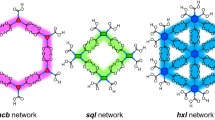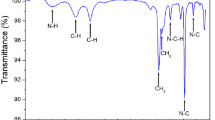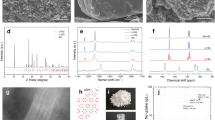Abstract
VARIOUS instances are known of continuous crystalline ‘host’ lattices within which ‘guest’ molecules may be trapped1,2. Organic lattices of this kind include the networks formed by hydrogen-bonded quinol molecules in the quinol clathrates; hydrogen-bonded urea and thio-urea networks in the urea and thio-urea adducts. Among inorganic lattices the best known are the crystalline zeolites, the most open of which, faujasite, easily occludes molecules as large as iso-octane; and two different kinds of hydrogen-bonded watter lattice, each with cavities able to encage diverse molecular species. It is of interest to compare aspects of the geometry of the free volumes of these host lattices, and to contract the free volumes of the organic and the inorganic lattices. It is also interesting to know the upper limit to the free volume in such continuous networks. Accordingly, the spatial properties of some cage and channel systems are summarized in Table 1. The term ‘free’, used above and in Table 1 in relation to channel and cage dimensions, means not occupied even by the periphery of any of the atoms forming the continuous network.
This is a preview of subscription content, access via your institution
Access options
Subscribe to this journal
Receive 51 print issues and online access
$199.00 per year
only $3.90 per issue
Buy this article
- Purchase on SpringerLink
- Instant access to full article PDF
Prices may be subject to local taxes which are calculated during checkout
Similar content being viewed by others
References
For example, Barrer, R. M., and also Powell, H. M., Solvay Congress on Non-stoichiometry, Brussels (May 1956) (in the press). Cramer, F., “Einschlussverbindung” (Springer, 1954).
Barrer, R. M., Brennstoff. Chemie, 35, 325 (1954).
Palin, D. E., and Powell, H. M., J. Chem. Soc., 208 (1947).
van der Waals, J. H., Trans. Farad. Soc., 52, 184 (1956).
Smith, A. E., Acta Cryst., 5, 224 (1952).
v. Lenné, H.-U., Acta Cryst., 7, 1 (1954).
v. Stackelberg, M., and Muller, H. R., Z. Elecktrochem., 58, 25 (1954).
Wyart, J., Bull. Soc. Franc. Min., 56, 81 (1933).
Breck, D. W., Linde Air Products Co., Ltd. (private communication).
Barrer, R. M., and Bultitude, F. W. (in preparation).
Fischer, K., and O'Daniell, H., Naturwiss., 43, 348 (1956).
See Barrer, R. M., and Falconer, J. D., Proc. Roy. Soc., A, 236, 227 (1956), Fig. 1, for the arrangement in space of several of these channel systems.
Pauling, L., “The Nature of the Chemical Bond”, 189 (Oxford Univ. Press, 1940).
Barrer, R. M., and Meier, W. M. (in preparation).
Author information
Authors and Affiliations
Rights and permissions
About this article
Cite this article
BARRER, R. Intracrystalline Free Volumes in some Host Lattices. Nature 178, 1410–1411 (1956). https://doi.org/10.1038/1781410a0
Issue date:
DOI: https://doi.org/10.1038/1781410a0



